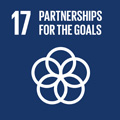- Docente: Ricardo Munoz Martin
- Credits: 6
- SSD: L-LIN/12
- Language: English
- Teaching Mode: Traditional lectures
- Campus: Forli
- Corso: First cycle degree programme (L) in Intercultural and Linguistic Mediation (cod. 8059)
Learning outcomes
The student
- understands the usual expectations placed on professional translators and interpreters in Italy;
- becomes acquainted with the process of initiating and keeping a business relationship to offer multilingual communication services;
- can minimally customize generic digital tools to become more efficient;
- has a working knowledge of basic professional conventions regarding names, numbers, and figurative language;
- knows the main orthotypographic and markup principles and knows how to deal with simple graphics;
- is familiar with specifics of both print and digital formats
Course contents
The course provides an introductory, professional overview of professional translating and interpreting. Although most topics are generic, the course focuses on freelancing, and has some translation-specific topics, although many are common to interpreting.
Course contents are organized into weekly, self-contained topics. Students will be helped to discover language-independent, problematic areas in source texts and discourses, and in the next session will have some hands-on practice on such topics.
Week 1: introduction
(1)
presentation of course contents and goals
the palette of multilectal mediated communication tasks
relationship between ST and TT
text is frozen behavior
(2)
language underspecifies meaning
language and interlinguistic gaps
recontextualization: deictic anchoring, explicitation, implicitation
translations get old
Week 2: the professional translation process
planning
making an estimate
writing an invoice
communicating with the client
Week 3: The translator's workstation
personalizing everyday tools
keyboard shortcuts
searching for information
Week 4: Names
exonyms
transliteration
official names
acronyms
publications
Week 5: Numbers, quantities, magnitudes
rounding up
weights, measures, units
money conversion and conventions
reporting statistics
Evaluation: turn in midterm assignment 1
Week 6: Orthotypography
fonts
page layout
text types and formats
Week 7: Multimodality
handling graphics and maps
translating charts and tables
songs
Evaluation: turn in midterm assignment 2
Week 8: Digital formats
web pages
pdfs
Spreadsheets
Week 9: Figurative language
metaphors
metonymy
rhethorical structure
Week 10: Elements of style
gender
wordiness
clichés
Readings/Bibliography
Brown, Tim. 2018. Flexible typesetting. New York: A Book Apart.
Moya, Virgilio. La traducción de los nombres propios. Madrid: Cátedra.
De Marco, Marcella. 2006. Audiovisual Translation from a Gender Perspective. Jostrans 6: 167–184. Available at https://www.jostrans.org/issue06/art_demarco.pdf
Rothstein, Jandos. 2007. Designing magazines. New York: Allworth Press
Typography Handbook. http://typographyhandbook.com/
Butterick's practical typography. https://practicaltypography.com/Assessment methods
The assessment comprises two midterms activities and two final exams.
Assignment I, midterm I – Submission of a contrastive study of DIT's style sheets: between 1,000 and 1,500 words, worth 25 %
The students are expected to contrast, improve, and enlarge the different style sheets the DIT offers to streamline final papers in undergradutate and graduate levels. This will require the students to think critically about the existing norms elsewhere.
Assignment II, midterm II - Submission of a translation of a magazine article with abundant phenomena of the kinds included in the syllabus (e.g., names, weighs and measurements, metaphors).
The students are expected to turn in the translation of a text between 800 to 1200 words-long. Students will choose their texts, subect to approval by the instructor.
Assignment III, written exam - Submission of a bilingual magazine in pdf format.
Students will turn in a magazine, that may adopt various forms: an airline magazine, a DIT-student magazine, a touristic magazine, and the like. The magazine should cover most topics addressed in the syllabus. Students are advised to seek guidance well in advance and to check their progress with their instructor. This is a collective endeavor, and students will work in groups of 5, with a group leader.
Assignment IV, oral exam - Analysis of a translated text
Students will be expected to carry out a 10 to 15 minutes, individual, oral criticism of a translation, as presented in print form by the instructor.
Office hours
See the website of Ricardo Munoz Martin
SDGs


This teaching activity contributes to the achievement of the Sustainable Development Goals of the UN 2030 Agenda.
